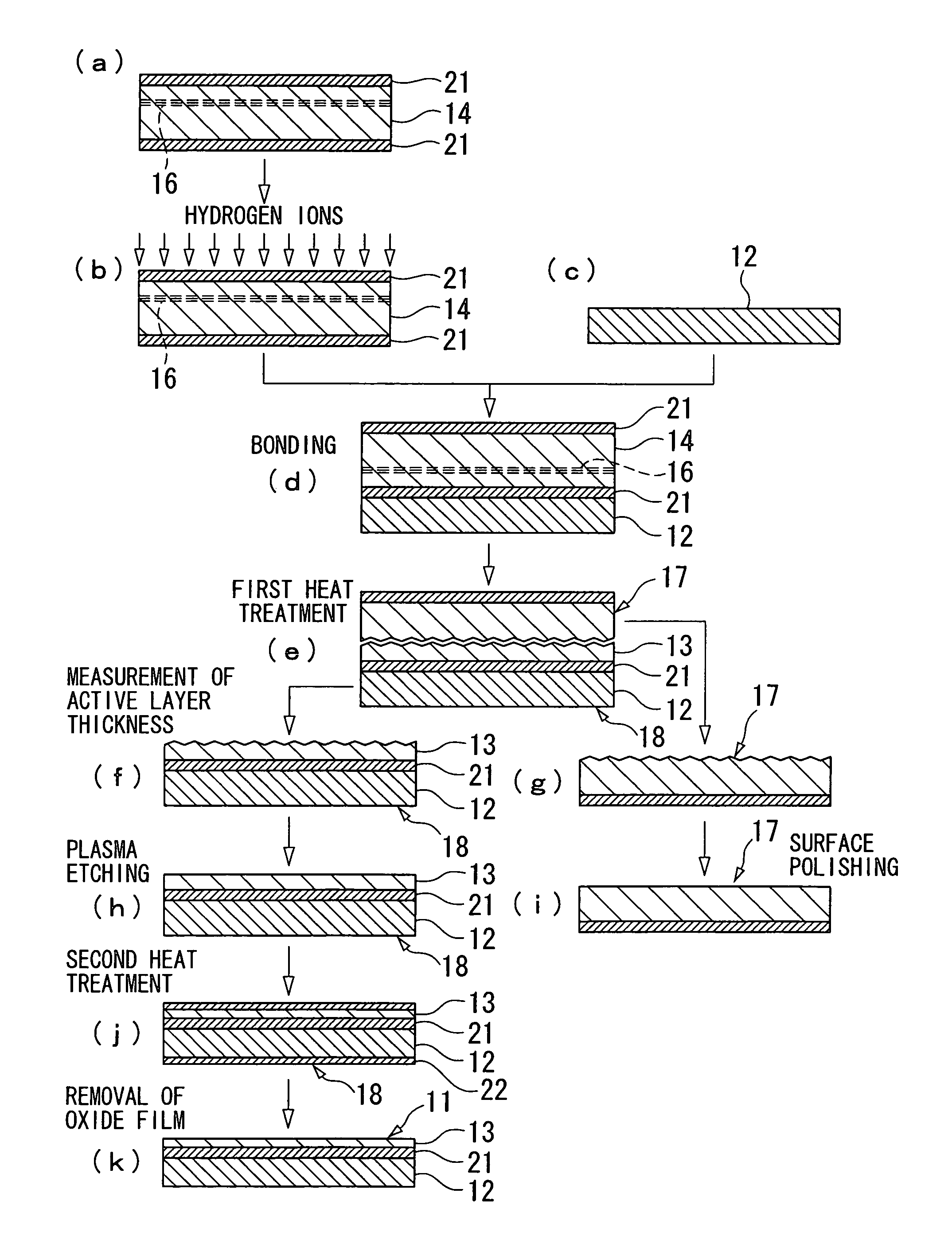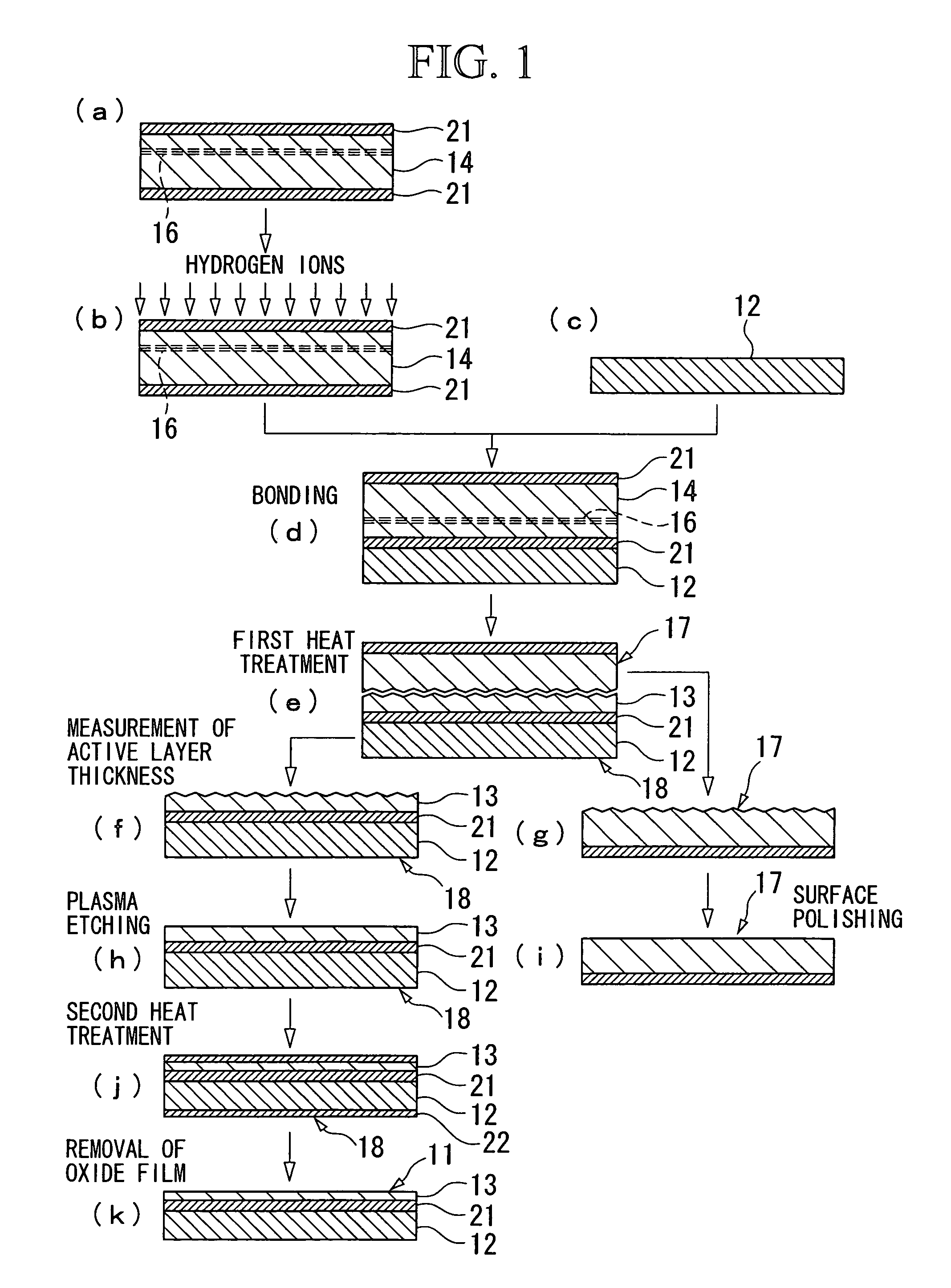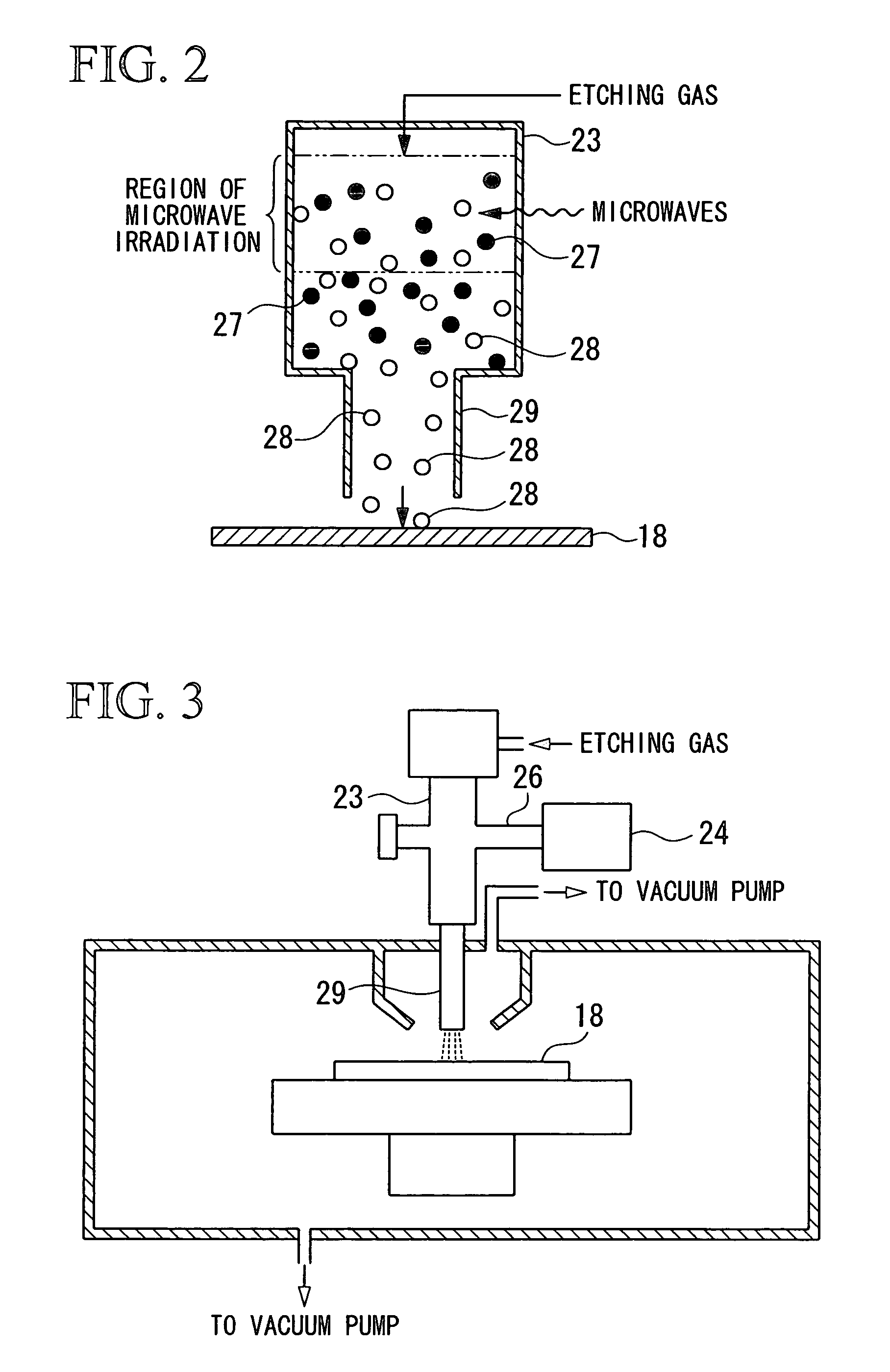Silicon-on insulator substrate and method for manufacturing the same
a technology of silicon-on-insulator substrate and substrate, which is applied in the direction of individual semiconductor device testing, semiconductor/solid-state device testing/measurement, instruments, etc., can solve the problems of degrading the in-plane uniformity, affecting the uniformity of the active layer, and damage to the active layer, so as to reduce the variation of the active layer thickness, remove the crystal defect layer, and the active layer thickness is more uniform
- Summary
- Abstract
- Description
- Claims
- Application Information
AI Technical Summary
Benefits of technology
Problems solved by technology
Method used
Image
Examples
example 1
[0043]As shown in FIG. 1, first an active layer-forming substrate 14 made of a single-crystal silicon wafer and having a diameter and thickness of 200 mm and 0.725 mm, respectively, was held in an oxygen atmosphere at 1000° C. for 5 hours so as to carry out a heat treatment; thereby a first oxide film 21 was formed not only in the top side of the active-forming substrate 14, but also in the back side and lateral face thereof. This first oxide film 21 had a thickness of about 150 nm. Next, hydrogen ions were implanted at a dose of 6×1016 / cm2 and an acceleration energy of 50 keV from the surface of the active layer-forming substrate 14; thereby an ion-implanted region 16 was formed within the active layer-forming substrate 14 (FIG. 1(b)). The depth (implantation peak position) of this ion-implanted region 16 was set to about 500 nm, including the above first oxide film 21. A base substrate 12 which was made of a single-crystal silicon wafer and which had the same surface area as the a...
PUM
 Login to View More
Login to View More Abstract
Description
Claims
Application Information
 Login to View More
Login to View More - R&D
- Intellectual Property
- Life Sciences
- Materials
- Tech Scout
- Unparalleled Data Quality
- Higher Quality Content
- 60% Fewer Hallucinations
Browse by: Latest US Patents, China's latest patents, Technical Efficacy Thesaurus, Application Domain, Technology Topic, Popular Technical Reports.
© 2025 PatSnap. All rights reserved.Legal|Privacy policy|Modern Slavery Act Transparency Statement|Sitemap|About US| Contact US: help@patsnap.com



